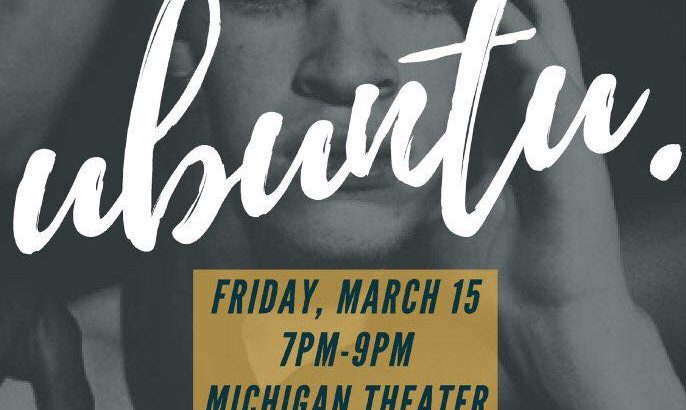This year was the African Student Association’s 21st Annual Culture Show. Typically held at the Crisler Center, this year’s show was performed in the Michigan Theater. This year’s theme was Ubuntu, which loosely translates to “I am because we are” in the Zulu language of Southern Africa. The program was neatly organized by four different categories beginning with: Society, Community, Family, and Individual.
The first act performed during the Society category was a fashion show. I was a bit shocked that after only twenty minutes of this fashion show, a fifteen-minute intermission followed immediately after. Resuming from intermission was the Community category. This included a short performance by the Michigan Gospel Chorale, a second fashion show, then a performance by Bichini Bia Congo. Bichini Bia Congo is a performance group based in Ann Arbor whose mission is to make audiences aware of the African culture (more specifically, Congolese). Although this was my first time attending ASA’s culture show, it appears that the Bichini Bia Congo group normally performs with them each year. Their performance was by far my favorite act of the show and I wished that it were longer. According to Bichini Bia Congo, “African traditions are communicated through dance, music, song, and drum.” Prior to attending ASA’s show, this is much of what I was expecting — lively dancing, boisterous drumming, native music and songs, immaculate cultural attire. And to be honest, much of the show did not live up to this expectation, with the exception of the small insert done by the Bichini Bia Congo group which was composed of one male drummer and two female dancers.
The third part of the show, Family, was again, another fashion show and Amala. Amala embodied a more lively performance, which I, and the rest of the audience, seemed to be quite excited about. This entailed continuous dance routines while the dancers all wore coordinated outfits. The final part of the show focused on the Individual. There was yet again, another fashion show…followed by a spoken word performance and closed out by two songs performed live by “Mind of Asante.”
Relative to other student cultural shows, I’d say that this show was on a much smaller scale. The audience turnout was slightly underwhelming, the duration of the show was surprisingly short, and the depth of the performances was much less than what I expected. Despite this judgment, student-run culture shows deserve a high level of respect. There is a considerable amount of time spent by full-time students planning, practicing, and preparing to put on a full show for friends and family to see and that is commendable nonetheless.


